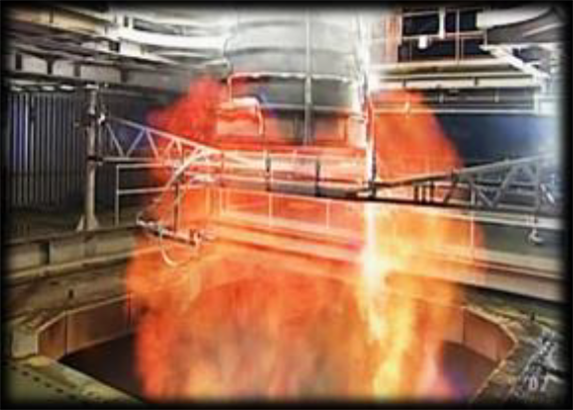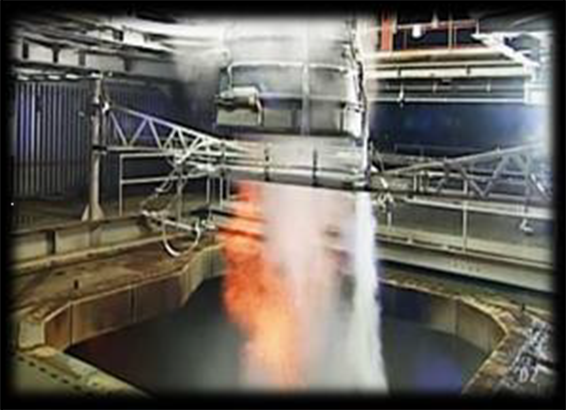Stennis Space Center (SSC) tests liquid rocket engines and
components for NASA, the Department of Defense and the
commercial space industry. Rockets, and the facilities used
to test them, are precision systems that experience extreme
temperatures, high vibrations and high pressures during
operation. During ground testing, accidental propellant
detonation, such as the one in Figure 1, can generate strong
pressure waves. The ability to predict these blast occurrences
enables SSC to reduce risks to test facilities and adjacent test articles.
Rockets generate thrust through rapid chemical reactions. Modeling
and simulating these reactions requires specialized software, such as
Loci/CHEM, developed by Mississippi State University. Loci is a
rule-based framework that efficiently maps numerical algorithms
to parallel processing systems. CHEM is a Navier-Stokes solver
for non-equilibrium flows involving chemical reactions. Loci/CHEM
can simulate the complex 3D flows of turbulent, chemically reacting
mixtures found in rocket engines.
SSC engineers utilized Loci/CHEM to develop a practical, high fidelity,
computational fluid dynamics (CFD) methodology to predict the occurrence
of detonation events during liquid rocket engine tests, and to understand
the propagation of blast waves through test facilities. Verification and
validation studies were completed for hydrogen-fueled detonation phenomena,
such as shock-induced combustion, confined detonation waves, vapor cloud
explosions, and deflagration-to-detonation transition (DDT) processes.
The DDT validation cases included predicting flame acceleration mechanisms
associated with turbulent flame-jets and flow-obstacles. Excellent comparisons
between test data and model predictions were observed. This new capability
has been successfully applied to model a detonation that occurred during liquid
oxygen/gaseous hydrogen rocket diffuser testing at Stennis Space Center.




